
The Business of Fashion
Agenda-setting intelligence, analysis and advice for the global fashion community.

Agenda-setting intelligence, analysis and advice for the global fashion community.
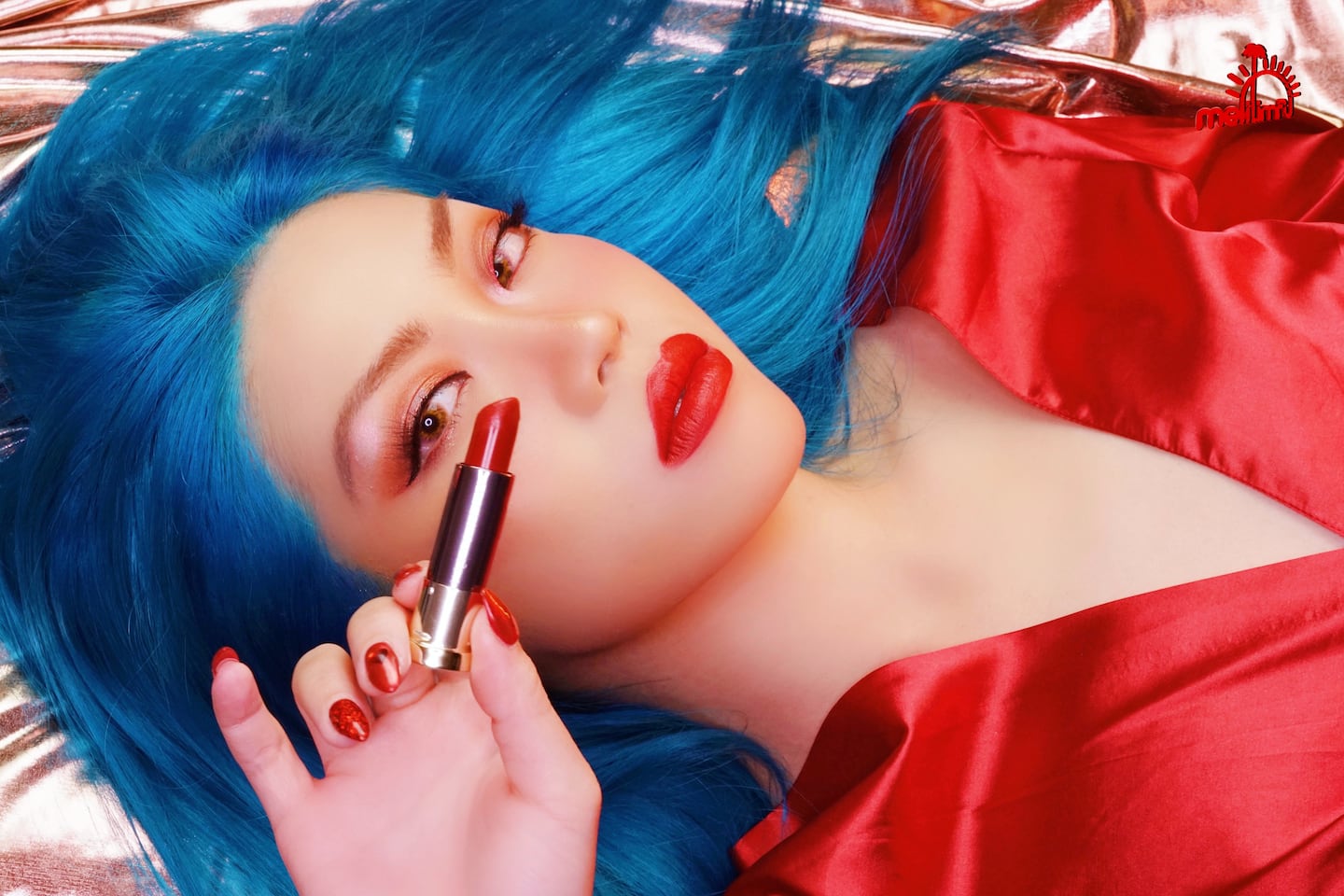
Hello BoF Professionals, welcome to our latest members-only briefing. China’s colossal size and dynamism makes it a top priority for any global business, but it remains opaque to many in the fashion industry. Leveraging our rare access and local knowledge, the BoF China team demystifies the Chinese market with weekly industry analysis and the wider socio-cultural context you need to sharpen your focus.
SHANGHAI, China — The economy has recently dominated news in China, with latest GDP data released this week confirming a significant slowdown in the second half of 2018.
For the last three months of 2018, growth came in at 6.4 percent compared with the same period in 2017, the slowest rate of growth since 2009. These numbers contributed to full year GDP growth of 6.6 percent, the slowest China has seen in 28 years. And several respected China watchers have cast doubt on these figures, suggesting that they may even be inflated.
Also in the headlines in recent weeks, however, has been lipstick. And this has compelled some market observers to draw a connection between the two.
ADVERTISEMENT
The category has exploded in China in recent years, with trending colours and collaborations regularly selling out. Just last week, MAC released its first ever collaboration with a video game, Tencent’s phenomenally successful “Honour of Kings”, which saw its five limited edition lip colours sell out in less than 24 hours.
Also making news in China has been an incredibly popular range of lip colours being pulled for sale by Beijing’s Forbidden City (also called the Palace Museum) a hugely popular tourist attraction and former imperial palace of the Ming and Qing dynasties that has made much of its revenue in recent years through sales of unique souvenirs with an historical twist.
Trading on what it touted as “traditional” Chinese beauty concepts, as well as packaging that leans heavily on Chinese cultural elements, the Palace Museum lipsticks had, since launching in December, been a sell-out success on Alibaba’s Taobao platform.
As Chinese consumers think twice about big ticket purchases in a tough macroeconomic environment, categories predicted to benefit from belt tightening include instant noodles, and lipstick.
The official reason for their removal from the market has been explained as a desire for the museum to upgrade product quality before resuming sales in mid-February, though there has been conjecture that the real reason stems from an internecine dispute with another souvenir product division of the Forbidden City, which also sells a separate, more expensive line of lipsticks on Alibaba’s Tmall platform. With Palace Museum merchandising revenue estimated to have topped 1.5 billion yuan ($220.5 million) in 2018, it’s little wonder there’s some jostling for turf.
Like many Asian countries, skincare has long dominated the beauty conversation in China, eclipsing colour cosmetics in a big way, but lipstick has been at the forefront of a charge from the colour brigade, which grew 14.2 percent in the first half of 2018, bringing total retail sales of colour cosmetics in China to 127.6 billion yuan ($18.74 billion).
As Chinese consumers think twice about big ticket purchases in a tough macroeconomic environment — though retail sales growth in December ticked up to 8.2 percent, sales of categories including autos and smartphones fell precipitously in the second half of the year — categories predicted to benefit from belt tightening include instant noodles, and lipstick.

The Palace Museum lipstick collection | Source: Palace Museum
Though the phenomenon known as “the lipstick effect”, in which sales of accessible luxuries like lipstick allegedly rise as a country’s economic performance suffers, has not been observed previously in China (a country which has enjoyed decades of growth following decades of revolution and upheaval), recent earnings data released by big beauty players, including Estée Lauder and L’Oréal show growth driven by strong China sales.
ADVERTISEMENT
“In terms of consumption, at least in our categories ... we don't see any slowdown in the country," L'Oréal chief executive Jean-Paul Agon said of China following his company’s third quarter earnings announcement.
“It comes down to lipstick being very versatile, accessible, not expensive and very easy to consume,” says Elijah Whaley, chief marketing officer of influencer marketing platform ParkLu. He posits that international brands taking a long-term look at China’s economy (and familiar with the so-called lipstick effect after observing it in Western markets) have led the charge in promoting the category.
“I wonder whether the big focus on lipstick is about the big makeup companies understanding this principal and they are driving the trend for lipsticks, rather than consumers. The hammer is coming down here soon, so maybe it’s a pre-emptive strike,” he ruminates.
According to data from research firm Mintel, lipstick accounts for 22 percent of China’s entire colour cosmetics market, and is used by 95 percent of urban Chinese women. Alibaba says over 3 million women buy at least five tubes of lipstick from Tmall each year, with 230,000 tubes of lipstick sold on the platform in the first hour of its 2018 International Women’s Day promotion.
For international brands to further capitalise on China’s lipstick wave, however, there needs to be better understanding of the unique cultural background driving consumer choices in the category.
Important to remember, according to Beijing-based make-up artist and top-flight beauty KOL Melilim Fu, are the tastes of Chinese men, not only because of the much-touted rise of China’s male beauty sector, but because some Chinese women look to buy lipstick colours that will please men, with social media posts touting trending lipstick shades as “zhan nan se” or “man-slaying colours” sure to stop men in their tracks.
“In the West, people talk about how nice the colour is, how cool and trendy it is and people will chase that, but in China the story is about how guys will like it because it’s not too much, it’s so soft. The angle is completely different,” Fu says.
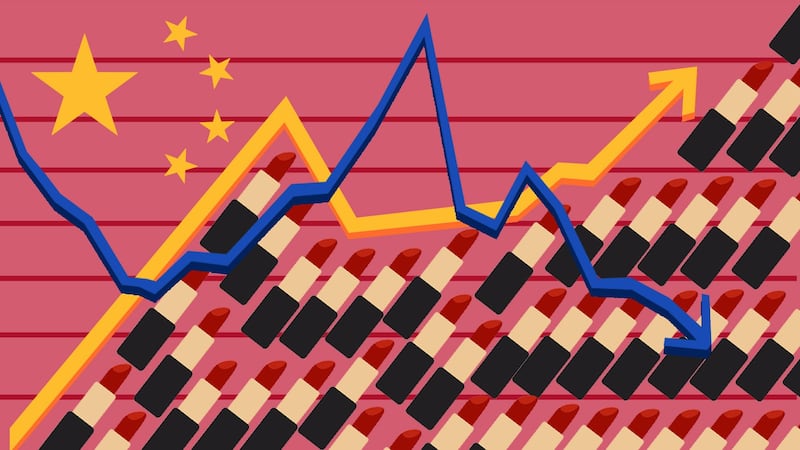
Illustration by BoF
ADVERTISEMENT
"Although the [international] prestige brands are still the trend, the colours and packaging that will become popular need to be suitable for Chinese culture," says Yao Shen, sales and marketing director for OEM manufacturer, Suzhou DMYL Cosmetics Co, pointing to the success of the Palace Museum collections as a portent of things to come.
This doesn’t necessarily mean, however, that Western brands should tap into the trend for more nationalistic cultural elements in lipstick without careful consideration.
“Anytime a foreign brand tries to do a collaboration that is overtly about Chinese culture it’s almost always a dud and people often find it offensive, it’s like it has to be a purebred, by China for China thing,” Whaley says, a view shared by Fu.
She says that while “Chinese people are really obsessed with our own country and love it, we [Chinese] aren’t usually going to like it [just because] brands want to do collaborations about Chinese culture.”
Rather, focusing on high quality product, and natural “low key” looks are key to reaching pragmatic Chinese women, for whom colour cosmetic use is still much more about conforming to rapidly evolving beauty standards.
时尚与美容
FASHION & BEAUTY
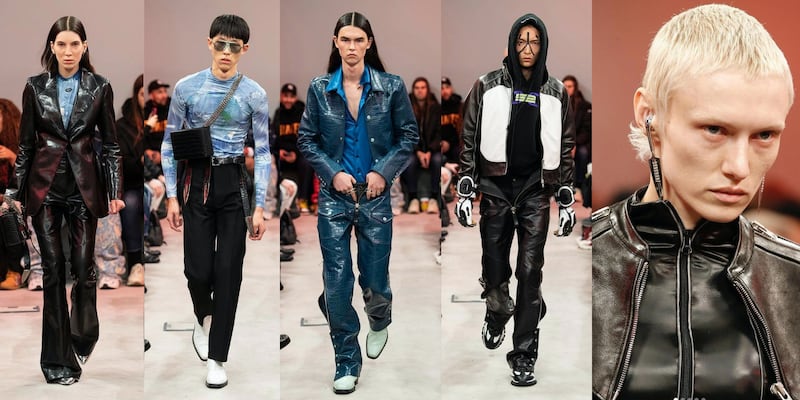
Sankuanz AW19 Show at Sotheby‘s Paris | Source: Sankuanz
Sankuanz Reps Chinese Streetwear Abroad
2019 is going to be a big year for Chinese streetwear label Sankuanz. The brand showcased its Fall/Winter 2019 collection on the opening day of Paris Fashion Week Men's. Inspired by the aquatic and utilitarian, designer and 2015 LMVH Prize finalist Shangguan Zhe's models sported impeccably tailored suits with unexpected details, while diving vests, orca-inspired colour-blocking and embossed accessories complimented a deep-sea colour palette. For the first time, Sankuanz introduced womenswear looks and its new collaboration with Herschel Supply, hot on the heels of its Spring/Summer 2019 partnership with Puma. The latter collaboration, which features reworked versions of Puma's footwear as well as a capsule apparel collection, is slated to drop online and in selected stores on February 2nd. (Highsnobiety)
In China, Tiffany Thrives as Chow Tai Fook Slips
The Chinese luxury market is sending brands mixed messages — just ask America's and China's jewellery giants. Hong Kong-based Chow Tai Fook reported an 11 percent decline in same-store-sales for its stores in Mainland China, Hong Kong and Macau for the quarter ending December 31st — the first time this has happened in two years. Though the company opened 259 new locations in the mainland during the quarter, retail sales there rose by a mere 1 percent, and Chow Tai Fook cites "an uncertain macro environment" for its less than ideal results. Meanwhile, strong sales in mainland China saw New York-based Tiffany & Co report double-digit sales growth for the country in November and December 2018. Though Tiffany's report reflects a wider dip in Chinese tourists' spending abroad, its chief executive Alessandro Bogliolo says that domestic demand is 'accelerating'. What can be gleamed from these figures amid wider disagreements about the country's consumption appetites is that China-related turbulence shows no signs of waning. (Bloomberg, Ladymax)
JD.com Makes Timely Investment
The same week that Chinese media group Hantang Culture announced its partnership with Richemont-founded watchmakers' foundation Fondation de la Haute Horlogerie (https://cn.businessoffashion.com/2019/01/daily-bulletin-kappa-parsons-fhh-cn.html), Chinese e-commerce giant JD.com announced its strategic investment in Xinyu Group, China's largest offline watch retailer. The investment follows last year's Singles' Day partnership between the two companies, and JD.com already hosts around 500 watch brands. Ebrun estimates Xinyu's Swiss timepiece market share at 30 percent, and the group runs almost 400 brick and mortar points of sale where shoppers can find 50 international watch brands including Omega, Cartier, Rolex, Jaeger-LeCoultre and Longines. With China's watch market expected to reach 79.4 billion yuan by 2020, the investment could strengthen JD.com's offline capabilities in the long term — a much-needed boost following a rocky 2018, during which recently-dropped sexual assault charges against chief executive Richard Liu saw shares slip by over 60 percent. (Ebrun)
科技与创新
TECH & INNOVATION
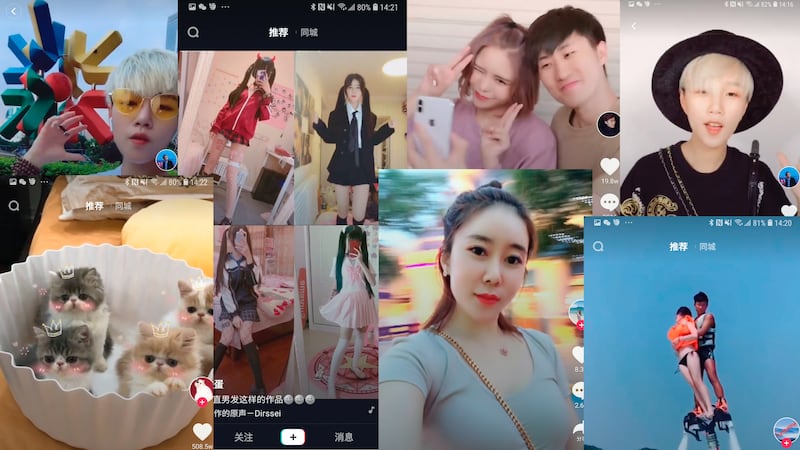
Illustration by BoF
Douyin Eyes E-Commerce Expansion
On January 10, Xiaomi launched its Redmi phone brand through a pop up store on Douyin (known in the west as Tik Tok), the first brand to partner with Bytedance's short video platform in this format. A day earlier, Douyin marked the end of its 'Merch' program, during which it encouraged users and businesses to recommend their favourite Taobao products in their video and livestream content and ranked products according to popularity. Last March, the platform announced a deal with Alibaba's Taobao enabling content creators to promote products and link to the latter's marketplace. Though Douyin isn't the only short video platform to introduce e-commerce functions — Tencent-backed Kuaishou has its own 'mini store' and e-commerce market functions — its growing popularity with luxury brands may give Bytedance a fighting chance in dismantling China's 'Big Three' tech giants Baidu, Alibaba and Tencent (see below). (36Kr)
WeChat Gets Block-happy
China's tech turf wars are heating up. Last week, it was revealed that Tencent's super app WeChat blocked three social networking competitors from its platform in a single day. The three rivals in question, Bytedance's latest Snapchat-esque offering Duoshan, Liaotianbao messenger, and anonymous social media platform Matong, were launched on January 15. Boasting over 1 billion monthly active users, WeChat has long reigned over China's social media ecosystem, but new players are challenging the platform's supremacy: Bytedance's Douyin, for one, was established in 2016 and has already reached 250 million daily active users. It's plain to see why WeChat would be looking for ways to rid its ecosystem of third-party services, but its efforts could backfire: while China's mobile users spent 47 percent of their phone time on WeChat last year, this is down from the previous year's 50 percent, and Bytedance's apps are already claiming a 9.7 percent share. (Technode)
In App Downloads, China Reigns Supreme
According to tech research platform App Annie, China was responsible for almost 50 percent of the world's downloads in 2018 across iOS and third party app stores, as well as almost 40 percent of app store consumer spending in the past year. This makes China the top app downloading country in the world, followed by India, the US, Brazil and Indonesia, and where total spend is concerned, it is followed by the US, Japan, South Korea and the UK. However, China's mobile users download an average of 50 apps on their phones, far less than the 100+ average downloads in the US, South Korea, Japan and Australia, whose users use their larger pool of apps less. Additionally, the amount of time that Chinese users spend on mobile e-commerce platforms is 7 times that of India's netizens, and 11 times of the US' — retailers take note. (Huanqiu)
消费与零售
CONSUMER & RETAIL
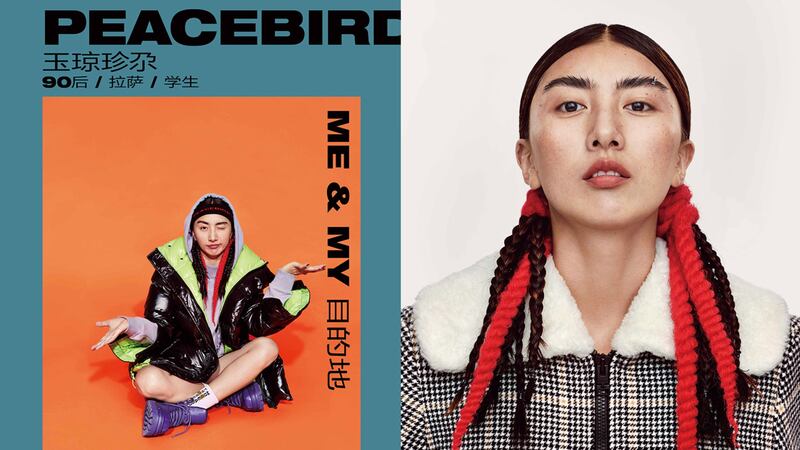
Peacebird's Spring/Summer 2018 Campaign | Source: Peacebird
Peacebird Controllers Under Investigation
Last week, it was announced that Zhang Jiangping and Zhang Jiangbo are being investigated by the Securities Regulatory Commission for illegal transactions disproportionately holding shares of retail company Ningbo Zhongbai. The brothers are more commonly recognised for their respective roles as directors of China's second largest branded apparel group Peacebird, though Zhang Jianping is also the company's chairman, which they founded in 1996. Although Peacebird has stated that the investigation does not involve the company, its share price on January 14th fell by 3.17 percent to 17.71 yuan (around $2.61) — time will tell whether the drop is merely a hiccup for the ambitious group's otherwise positive track record. (Sina Finance)
GXG Allies with Alibaba, Plots Womenswear Acquisition
GXG — the L Catterton-backed Chinese menswear retail group with over 2,100 stores nationwide— has found a new partner in Alibaba. Though GXG has utilised Alibaba-owned Tmall's new retail technology in over 30 of its stores, the two giants opened their first jointly-operated location in Nanjing last November. GXG's vice president Wu Lei stated that increasing online traffic, winning new customers and incubating more brands were main objectives in partnering with the Chinese retail giant, but that the menswear group doesn't intend to rest on its laurels. According to Wu, GXG has ambitions to become an entire ecosystem spanning womenswear, childrenswear and loungewear — he anticipates that the company will bring a womenswear brand into the mix in the next three years. (36Kr)
Beijing Plays Whack-a-mole As Counterfeiters Evade Crackdown
Chinese counterfeiters are determined to outpace the laws and regulations seeking to clear up the country's fake goods industry. A new law that came into effect on January 1 is threatening online retailers with a 2 million yuan ($296,000) fine when fakes are spotted on their platforms. Yet, counterfeiters have already risen to the challenge, and are taking their businesses to the profiles and private messaging functions within WeChat and Douyin — a 'friend to friend' loophole in the new legislation. Beijing may be keen to stamp out fakes amidst IP-related Sino-US trade throes, but high demand for low-priced goods means that counterfeits aren't going anywhere soon. (Bloomberg)
政治,经济,社会
POLITICS, ECONOMY, SOCIETY

One of Kr Space's many co-working spaces in Shanghai | Source: Kr Space
China's Co-working Startups Struggle
Though co-working accounts for 520,000 desks in China's first tier hubs, the co-working boom has met its match in the country: a funding drought. Between last January and October, forty companies specialising in shared offices have disappeared, with over 40 percent of such spaces seeing only half of their desks filled, according to the China Real Estate Chamber of Commerce. Furthermore, none of the start-ups have reported a net profit, barring small players from competing with the likes of US-based WeWork, now rapidly expanding in the east. One of the country's largest operators Kr Space manages 300,000 square metres of co-working space and has doubled its headcount since 2018, but has recently cut 12 percent of its workforce and is reneging plans for expansion. Considering that costs for acquiring and managing spaces are on the rise, the lack of fresh funding could prove fatal for China's smaller players. (SCMP)
Lunar Cotton Thrives, Sino-US Space Administrations Defy Trade Tensions
Since touching down on January 3, China's Chang'e 4 lunar probe reports that cotton seeds have germinated in the new biosphere. According to a photo published by the China National Space Administration (CNSA), cotton, rapeseed and potato seeds are germinating, and the first to grow on the far side of the moon. Mission chiefs claim that the progress signals a major step in laying a foundation for a satellite base, and NASA has announced that it will collaborate with the CNSA on lunar landing research if Congress gives it the green light. Could NASA's announcement — in spite of US warnings against tech partnerships with the country — mean there is a place immune from trade war turbulence, after all? (SCMP)
Chinese Seniors Go Live
Wang Jingxiang is a hot new name on China's booming livestream scene with over 23,000 followers, but is over a half a century older than the many of the country's social media stars. Wang, who spends two hours every other day livestreaming her singing and fashion show performances, isn't China's only older internet sensation, and has a largely over-60's fanbase. 72-year-old Wang Kelan broadcasts her singing and dancing, while millions of netizens tuned into 77-year-old Cao Xuemei's channel 'Happy Grandma', where Cao chats with her Alzheimer-ridden husband to help him 'heal'. Though this new social media phenomenon may not be as lucrative for millennial-focused brands, companies shouldn't ignore the country's rapidly ageing population — according to Xinhua, one in three people in China will be over the age of 60 by 2050. (Straits Times)
China Decoded wants to hear from you. Send tips, suggestions, complaints and compliments to our Shanghai-based Asia Correspondent casey.hall@businessoffashion.com.
With consumers tightening their belts in China, the battle between global fast fashion brands and local high street giants has intensified.
Investors are bracing for a steep slowdown in luxury sales when luxury companies report their first quarter results, reflecting lacklustre Chinese demand.
The French beauty giant’s two latest deals are part of a wider M&A push by global players to capture a larger slice of the China market, targeting buzzy high-end brands that offer products with distinctive Chinese elements.
Post-Covid spend by US tourists in Europe has surged past 2019 levels. Chinese travellers, by contrast, have largely favoured domestic and regional destinations like Hong Kong, Singapore and Japan.